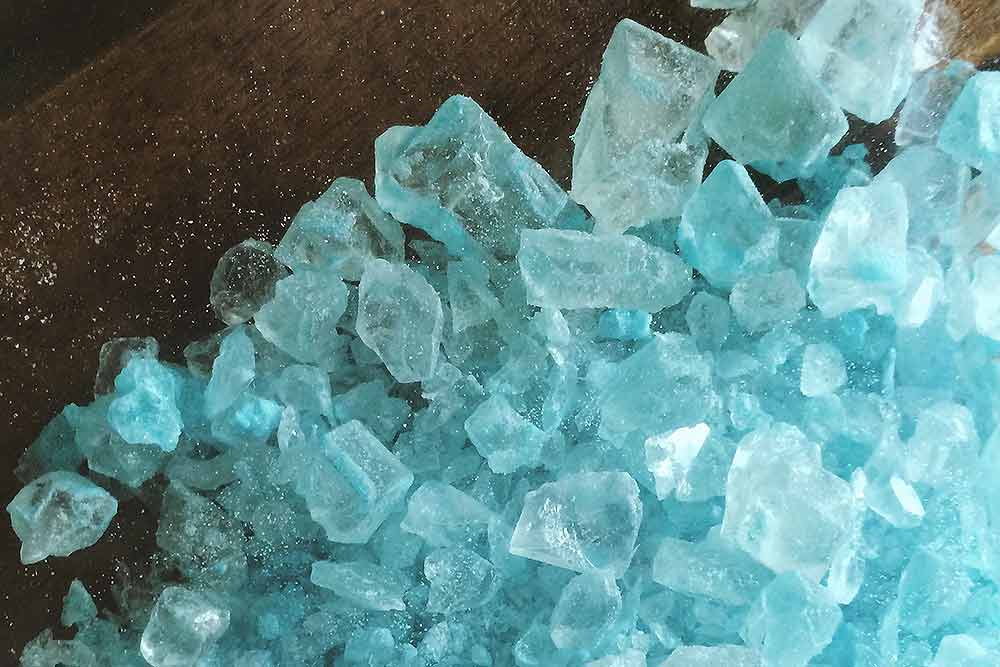Immediate Reactions and Risks
Most cathinone drugs are sold online, on the street or (if among the technically legal versions) in convenience stores. Typically, they come in 200- or 500-milligram packets of powder, labeled “Not for Human Consumption” and bearing the name of some innocuous product—often “bath salts” (hence the common nickname), “plant food” or “screen cleaner.” The drugs have a host of other common names, including:
- Blue Silk
- Cloud Nine
- Energy-1
- Ivory Wave
- Red Dove
- Snow Leopard
- Vanilla Sky
Like most drugs sold in powdered form, bath salts are typically inhaled, but may also be liquefied for smoking or injecting.
Typical physical and mental bath salts side effects include:
- Euphoria
- Talkativeness
- Increased sex drive
- Dizziness
- Racing heart
- Reduced muscle control
- Heavy perspiration
- Tooth grinding
- Agitated feelings
- Nausea
There can also be more severe reactions, including:
- Nosebleeds
- Vomiting
- Seizures
- Dangerous overheating
- Hallucinations
- Violent paranoia
The worst-case scenario is excited delirium, where stimulation is so intense that mental and physical functions reach potentially lethal overload. Victims may fly into wild panic, attempt suicide or violently attack anyone nearby. Physically, body temperature soars over 105 degrees, heart rate skyrockets and perspiration accelerates to the point of dehydration. Muscle tissue can actually break apart under the strain, sometimes disintegrating into the bloodstream and overstressing kidneys and liver with a flood of toxins.
Alone or in combination with other drugs, bath salts have sent over 20,000 people to emergency rooms in some years. In 2016, U.S. poison control centers received 382 calls involving bath salt exposure.
Long-Term Dangers of Bath Salts
Terrifying as is the potential of an excited-delirium episode, the scarier possibility is that it offers a picture of what long-term bath salts abusers may have to look forward to. Since these drugs surfaced on a large scale only within the past decade, much research has yet to be conducted on their long-term physical and psychological effects. However, if the worst short-term reactions mirror a typical cumulative effect then years of abuse could potentially lead to:
- Sleep-deprivation psychosis
- Ulcers
- High blood pressure
- Heart disease
- Major depression
- Development or intensification of psychotic disorders
- Permanent loss of muscle control
- Permanent damage to the liver and/or kidneys
- Serious malnutrition or chronic dehydration
- Brain damage
- If the drugs are taken by injection, Blocked veins, dangerous blood clots, serious skin infections or gangrene
In any case, there’s no question that bath salt abuse can lead quickly to at least one serious long-term problem: addiction. Research indicates that MDPV, one of the most common cathinones, is more addictive than meth and as much as 50 times more potent than cocaine.
The root cause of cathinone addiction is the same as with most drugs that increase pleasure sensations: the drugs work by increasing the brain’s dopamine levels or slowing dopamine’s re-absorption into the brain. Since dopamine is a primary neurotransmitter for positive feelings, the drugs promise instant, if artificial, happiness. The more frequently this is induced, however, the less work the brain’s natural dopamine producers have to do, and the “lazier” they get, sometimes becoming completely non-functional. Once this happens, a user not only craves the drug-generated pleasure but becomes seriously depressed without it, and soon needs the drug just to feel “normal.” Life begins to center on cravings for the next dose.
Bath Salts and the Law
Cathinone products were once freely available through many over-the-counter sources, but 2012 federal legislation declared the most common forms Schedule I Controlled Substances, illegal to sell or possess except under tightly regulated circumstances. The law, however, cannot cover all the small differences in cathinone formulas, and most “bath salt” use is hard to test for. A great variety of cathinone drugs, both illegal and technically legal, continue to circulate—use of the latter abetted by the common fallacy “if it’s allowed it must be safe.”
The clandestinely sold bath salts, like most illegal drugs, add the danger of getting something far more dangerous than expected. Cathinones are added to other drugs, and other drugs to cathinones.
To date, no cathinone product has been FDA-approved for routine medical use.
Treating Bath Salt Addiction
Likewise, there are no medications approved for cathinone addiction treatment. Recovery means full detox, followed by behavioral therapy and a long-term abstinence plan. Careful medical supervision at a qualified treatment center, important in detoxing from any addiction, is vital with “bath salts.” The subtle variations between cathinone compounds, the similarity of bath salts to some other common stimulants, the underdeveloped stage of established treatment procedures and the risk of suicidal reactions can put a patient in serious danger unless a qualified physician is close on hand throughout the withdrawal process. Although Medication-Assisted Treatment (MAT) in Florida may not yet be available for cathinone addiction, professional medical care can still offer vital support during detox and recovery.
With most patients, physical detox takes up to a week. The exact timeline depends on the patient’s individual physical and psychological condition. The person can then move on to intensive outpatient care or further residential treatment, advancing from there to aftercare and long-term support.
Related Articles:
Natural Psychoactive Substances Increase Calls to Poison Control
What Are Some of the New Street Drugs?







